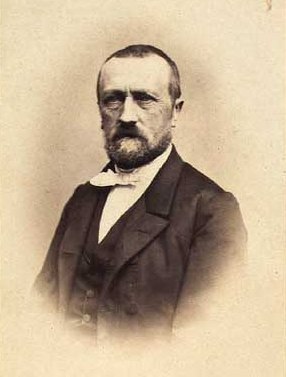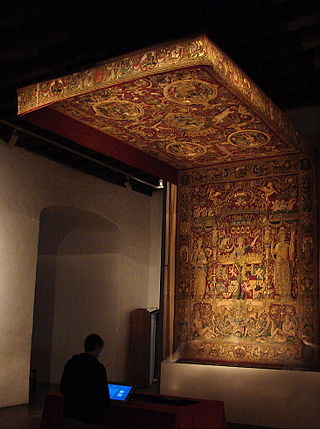Related Research Articles

Helsingør, classically known in English as Elsinore, is a city in eastern Denmark. Helsingør Municipality had a population of 63,399 on 1 January 2023. Helsingør and Helsingborg in Sweden together form the northern reaches of the Øresund Region, centered on Copenhagen and Malmö. The HH Ferry route connects Helsingør with Helsingborg, 4 km across the Øresund.

Kronborg is a castle and stronghold in the town of Helsingør, Denmark. Immortalized as Elsinore in William Shakespeare's play Hamlet, Kronborg is one of the most important Renaissance castles in Northern Europe and was inscribed on the UNESCO's World Heritage List in 2000.

Hans Ulrik Gyldenløve was the illegitimate son of King Christian IV of Denmark and his mistress, Karen Andersdatter. He was also a Danish-Norwegian Navy officer and lensmann bailiff.

Hans van Steenwinckel the Elder was a Flemish-Danish architect and sculptor. He worked on a large number of the most important Danish buildings of his time, although the exact scope of his contributions in many cases remains uncertain and much have been demolished or redesigned later. The father of Hans van Steenwinckel the Younger and Lorenz van Steenwinckel, he also founded a dynasty of architects and sculptors in Denmark.

Anthonis van Obbergen was a Flemish architect and fortifications engineer. After studying masonry in Mechelen and completing a tour to study fortification work in Germany, he initially gained experience working on the fortifications of Antwerp (1567–71). He later worked in Denmark and Poland where he designed fortifications as well as civilian homes.

Hans van Steenwinckel the Younger was a Flemish-Danish architect who specialised in the Dutch Renaissance style, typical of prestigious Danish buildings from the first half of the 17th century. Along with his brother Lorenz van Steenwinckel he was responsible for most of King Christian IV's many ambitious building projects.

Niels Carl Michaelius (Michael) Flindt Dahl, usually known as Carl Dahl, was a Danish marine painter during the Golden Age of Danish Painting.

Carl Frederik Sørensen was a Danish artist who specialized in marine painting. His paintings not only attracted customers in Denmark but also in the courts of St Petersburg, London and Athens.

Hans Peder Pedersen-Dan was a Danish sculptor.
Events from the 1580s in Denmark.

Kulturhavn Kronborg is an area in the harbour of Helsingør dedicated to culture and events, designed to attract residents and visitors. It is a joint initiative by Kronborg Castle, the Danish Maritime Museum, Kulturværftet and Helsingør harbour, and was opened in May 2013.

Gert van Egen (I) (alternative names: Gert va Egerem, Gert van Eggernn) (Mechelen, c. 1550 – Elsinore, 1612) was a Flemish sculptor who became a sculptor working for the Royal Danish Court.

Hans Knieper was a Flemish painter and draughtsman. He became a court painter and tapestry cartoon designer at the Royal Danish Court and ran a tapestry weaving shop in Denmark.
The following is a list of events that occurred in the year 1641 in Denmark.

Hellebækgård is a Rococo-style mansion in Hellebæk, Helsingør Municipality, North Zealand, located 5 km northwest of Helsingør and some 40 km north of Copenhagen, Denmark. The estate is associated the former 18th-century Kronborg Rifle factory and has also housed the Royal Danish Orphanage. It now houses a private primary school.
Jens Rostgaard, born 1650, died 1715, was a Danish soldier, civil servant, judge and antiquarian, known for leading the militia against the Swedish landing at Humlebæk in 1700, and for writing the history of Copenhagen.

Hans Rostgaard was a Danish bailiff (ridefoged) and county administrator (amtsforvalter) at Helsingør who is remembered for his achievement in the Second Northern War and especially his role during the Swedish siege of Copenhagen and subsequent assault on the city in 1659. He is also associated with Krogerup Manor in Humlebæk where a statue of him by Hans Peder Pedersen-Dan was installed in 1904. He was the father of Frederik Rostgaard and the uncle of Jens Rostgaard.

Valnæsgård, formerly Egensegaard, is a manor house and estate located on the northwestern tip of Falster, 20 km northwest of Nykøbing Falster in southeastern Denmark.

Caspar Fincke was a Bohemian-Danish court smith during the reigns of Christian IV and Frederick III. He has created some of the finest decorative metalwork for some of the most prominent buildings of the time, including Frederiksborg Castle, Kronborg Castle Christian IV's Chapel in Roskilde Cathedral and a number of churches around the country.
References
- ↑ "SLKE: Slottets historie". www.kronborg.dk. Archived from the original on 2013-06-27.